Collecting solar heat from south facing windows is a great way to save money and energy on heating, and a concrete floor is one of the best surfaces to collect and store heat. But the energy gains are not nearly significant enough to be worth living on a floor that you just don’t like. You may have seen this already, but here is our page on passive heating –
Passive solar heating - how to warm your home with the sun
Even if you put a floor covering on a concrete slab floor, you will still get the temperature balancing effects of thermal mass as long as it is insulated below, and therefore kept inside your building envelope. Darker colors are ideal for absorbing heat, but within the confines of a home, the heat collection advantage of darker floors is not that pronounced.
The reason is that once energy has entered your home (as in light through the window), it’s in. It will then either be absorbed by the floor, or reflected by the floor, in which case it will then hit another surface in your home and the heat will be partially absorbed there. Some light will be reflected towards and out the window again, but you are pretty much splitting hairs at that point.
All that is to say, don’t worry too much about the color of your floor, or by putting a floor covering over your slab that makes you more comfortable and happy.
Radiant heated floors perform best when there is nothing to slow the transfer of heat, like wood or cork flooring, but again, the effects aren’t so pronounced that you should fret about it. The best is to inform an HVAC designer ahead of time if you plan to add a floor covering so they can determine the R-value and how it is affected, but at worst it will slow the delivery of heat slightly, but as long as you keep the house at a certain temperature you really wouldn’t notice much difference. Wood floors would also be more comfortable when the floor isn’t heated, due to the reduced conductivity of heat between your feet and the floor.
Our latest demonstration house is a prefab kit house seated on a solar air heated floor with a polished concrete slab. High-performance prefab homes tend to be more affordable than site-built homes, and they are available in Ontario if you’re interested. you can see our Passive House and LEED ready prefab homes here, a few of which are oriented for passive solar heat gain, so maybe something there will meet your needs. Here are a few more pages you may like while doing your research, hope that helps!

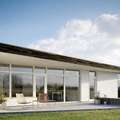




























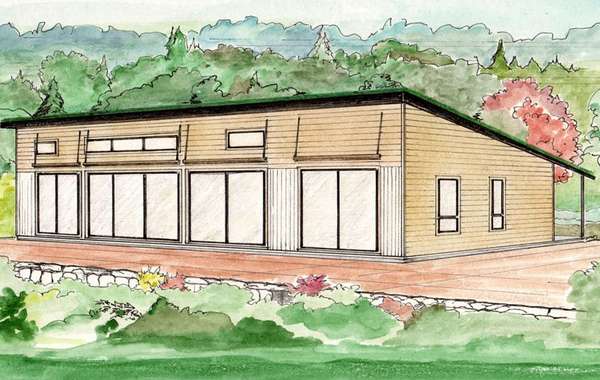
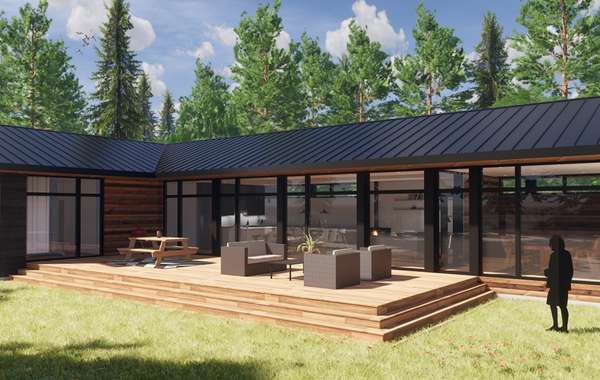
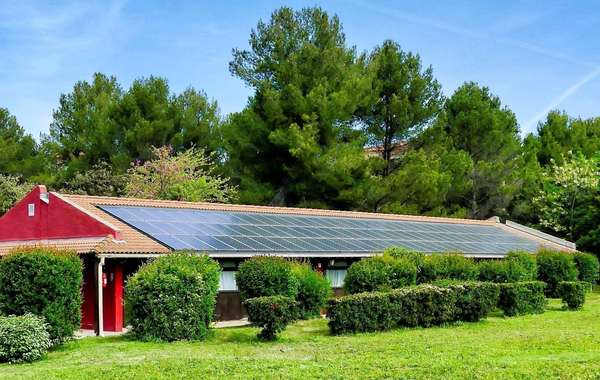


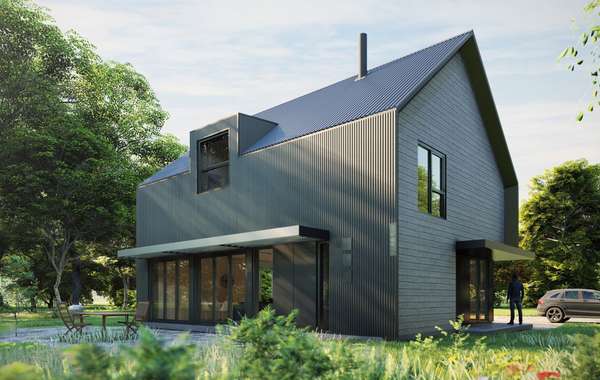
What do you think about the argument that a) IF the average annual temperature is below optimum for humans and b) IF you put enough thermal mass of sufficient conductivity into the building and isolate it from the outside enough, then there is no such thing as too much solar gain - even in mid-summer?
I'd prefer to minimise my use of cement and use tubular earthbag construction for most of it instead. Earthbag has been tested by international NGOs for rebuilding in earthquake and hurricane hit areas, and it proved very structurally stable, has almost as much specific heat capacity and density as concrete, but it's very cheap and quick and easy to build with. And it looks nice with lime plaster on. They recommend ground and external walls insulation but only around the perimeter.
Enough thermal mass = I'm thinking of earthbag (aka. super-adobe) for most of it, with a wall of water tanks stacked 4 high in a timber frame, behind rebar mesh covered with fruit vines on the south side, granite cobblestone or brick paths, and use car radiators used in the apex of the dome to transfer heat into the bottom of the water tanks more efficiently, and underground heat exchange water pipes under the soil in the growing areas.
The two places where I'm thinking to do it - one has a warm climate, average 18C, coastal with 500mm precipitation per year, so there potentially excess heat is more of an issue, and the other location I'm thinking about has average annual temperature 10C, 680mm precipitation.
I plan to make a thermal mass rocket stove, with some modifications I got from wood kilns designed for firing porcelain (very high temperatures), including pre-heated air and a downdraft firebox. So I don't mind if the passive solar gain is not enough by itself. In the colder place where I'm planning to build, firewood is cheap. And I'd try to get recycled wood pellets too and design my stove for both.
I used to live in a house with a solar thermal system, 600l thermal store tank, and quite often in summer it'd get to nearly 95C throughout the tank, so to avoid it boiling or risking damage to the collector the next day by too much pressure in the pipes if the heat exchange circuit was not pumping, I'd release some heat by having a huge hot bath in the evening. Not really a hardship :) I can think of many more good uses for spare hot water. I think it's better to release some excess heat via water outside (water is plentiful in the cooler location I'm mainly thinking of) than to limit solar gain all year and then have to make an expensively super insulated and MHRV box.
Hi Kester, that's an interesting theory you have. We removed the links you posted as we don't keep links in comments sections, but one of the ones you posted was from an Earthship. There is a lot of apeal to them as it is a great looking story, but they do have drawbacks. In case you are getting a lot of your inspiration from them I would suggest a look at this page about why Earthships don't work in cold climates as it explains some of the downsides and challenges that you may not be getting from the Earthship corporate websites or blog pages from enthusiasts. There is a lot in there about thermodynamics, and it explains some of the limits of thermal mass in regulating temperatures on a 24 hour cycle.
Here are a few other pages on building science related to the topics you are covering so have a look and let us know what you think-